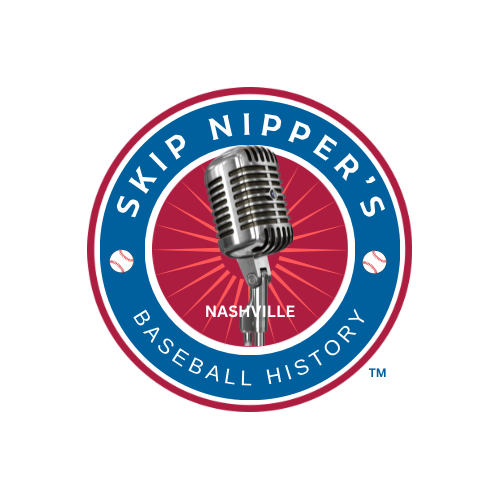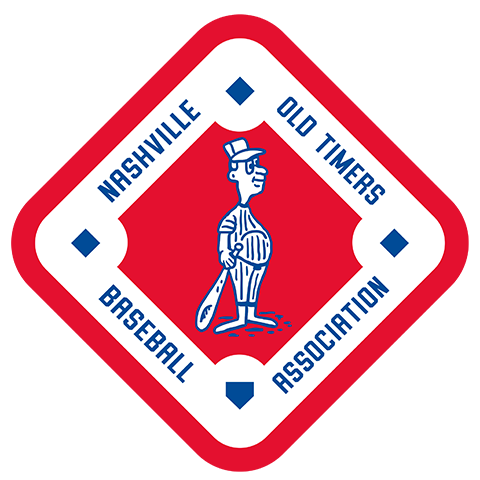
There was once a tall marquee that called attention to Nashville’s famous ball field that had been home to amateur and professional teams since 1870. The sign stood over the entrance to Sulphur Dell and proclaimed it as “Baseball’s Most Historic Park”.
The professional Americans, Blues, Tigers, Seraphs, and Vols were joined by the Negro League Elite Giants and a multitude of local amateur teams which claimed “the Dell” as their home field.
In the early days the park faced the northeast toward the State Capitol. The park was reconfigured in the winter of 1926 so that the sun would no longer be in the eyes of batters during afternoon games, and Nashville was soon to have one of the finest steel and concrete stadiums in the South.
Although the old ballpark had seen its share of historic moments from seasons past, in 1927 the new stadium would soon add new chapters to its history to include full crowds, exciting teams, outstanding players and gigantic home runs.
Located just north of the city center, Sulphur Dell was situated in an area that was below the street level. It had an unusual contour and prone to flooding as the banks of the nearby Cumberland River often overflowed during spring rains. One visiting sports writer described the park as “looking like a drained-out bathtub.”
Major league teams often scheduled exhibition games in southern cities as they broke training camp and made their way north to begin the regular season. Nashville was a popular stop, and fans embraced the name “Suffer Hell” by players who had never seen the park but had heard of the unique outfield configuration. They were often victims of the hills that made even the most routine fly ball an adventure.
Babe Ruth, always a fixture in right field for the New York Yankees, reportedly refused to play “the dump” and once moved to left field for an exhibition game in Nashville, saying, “I won’t play on anything a cow won’t graze on.” A player standing at the base of the fence in right field was 22 1/2 feet above the playing surface.
It was a short distance to that fence, too. Often the second baseman would field a hard-hit ball that slapped against the bottom of the wooden fence, caroming back into the infield. The right field fence was only 262 feet from home plate.
That was the Sulphur Dell beloved by Nashville baseball fans. The capacity of the ballpark was around 8,000, and as baseball boomed fans faithfully showed their loyalty by filling the parking lot and streets with their cars, traveling by trolley or bus, and walking the short distance from the city center or from the surrounding residential areas nearby.
As Nashville became a baseball town, folks had an insatiable thirst for cheering on their hometown team. The stands would buzz with cheers of support, whether on a chilly spring day in April or a hot sunny afternoon in July. Amateur teams playing at Sulphur Dell experienced rabid fans’ support, too, as baseball became king in the city. With the unusual outfield and short right field ‘porch’, Sulphur Dell even became a major tourist attraction.
When lights were added in the early 1930’s, folks could spend an evening at the ballpark since they did not have to leave work early. And since television was not yet on the horizon, they could turn their attention to the National Pastime under the lights that their grandfathers and fathers had enjoyed in the daytime.
But something was missing.
Yes, Nashville had a beautiful park, even with its idiosyncrasies. Its clean grandstand shaded its patrons from the afternoon sun during day games. That’s why the stands were reconfigured, with the setting sun no longer in the batters’ eyes and the fans could shielded from the heat with a cover that provided shade during the 4 or 4:30 PM starting time.

Fans would often arrive early for batting practice, filling the shaded rear seats until the sun began to move to the west. Then they would move closer to the field as the shadows stretched out into the lower seats.
Baseball was supported by the Negro community, but they were limited to a segregated section of the park where they would watch the game. It was an unusual place to have to sit; the bleachers for them were located down the left-field line all the way out to the outfield fence.
In the sun.
© 2019 by Skip Nipper. All Rights Reserved.
Note: This is part one of two parts; part two will be published tomorrow.



